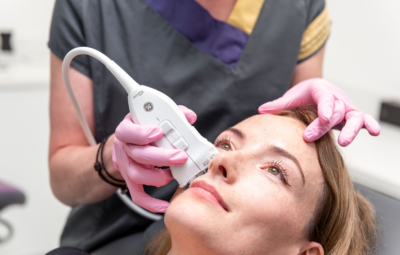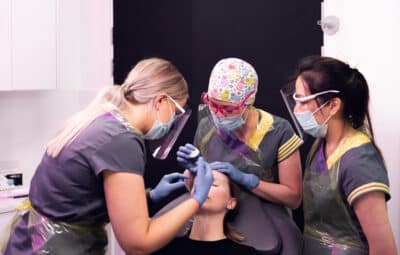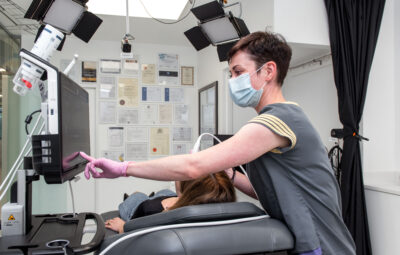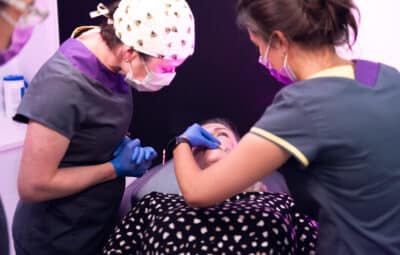
Forehead Fillers Gone Wrong? How to Identify & Fix It
18 July 2024
In this post:
- Learn why the technical challenges of forehead filler make it one of the most advanced treatments in aesthetic medicine, often leading to severe complications when performed by untrained injectors.
- How recent advancements in ultrasound technology are providing a vital solution for diagnosing and correcting misplaced forehead fillers, enhancing safety and outcomes.
- Delve into a real-world scenario where a patient suffered from severe complications due to poorly executed forehead filler, illustrating the critical role of ultrasound in managing such cases.
- Discover ultrasound-guided techniques for safely dissolving misplaced fillers, including practical tips for achieving precision and preventing further damage during the correction process.
Social media users have taken interest in a treatment rapidly growing in popularity: forehead fillers. As demand for this treatment only continues to increase, you’re likely considering whether this treatment is worth adding to your practice.
The primary use of forehead filler is to fill a concave in the forehead. This treatment is especially appealing for women looking to achieve a more convex, feminine forehead shape. Where forehead Botox is relatively safe, forehead filler poses more risk.
However, forehead filler is one of the most technically advanced filler treatments, and many aesthetic practitioners refuse to treat this area due to the risks. It’s in the same risk tier as other dermal filler treatments like temple filler and botched tear trough filler. Too often is this treatment performed by untrained injectors, leading to horrific complications like filler blindness or necrosis.
Fortunately, ultrasound technology has experienced impressive developments in recent years and is now a crucial tool in diagnosing and correcting these complications.
This article explores how ultrasound can be used to address forehead fillers gone wrong and how practitioners can ensure better outcomes for their patients. The information from this blog post is taken from ultrasound expert Dr MJ’s webinar on Ultrasound-Guided Techniques to Rapidly Dissolve Fillers with Clarius Mobile Health.
Case Study: Understanding Forehead Filler Complications
The forehead is one of the most anatomically complex areas of the face. It contains crucial blood vessels and nerves. Incorrect placement can lead to complications, ranging from lumps and bumps to blindness and nerve damage.
The following patient had forehead filler by an unlicensed practitioner in the UK. Because of the lack of aesthetic regulations, cases like these are unfortunately all too common. Immediately after treatment, she experienced severe headaches, swelling, redness, and significant pain. She returned to see the original practitioner, who told her she was fine after attempting to dissolve the filler.
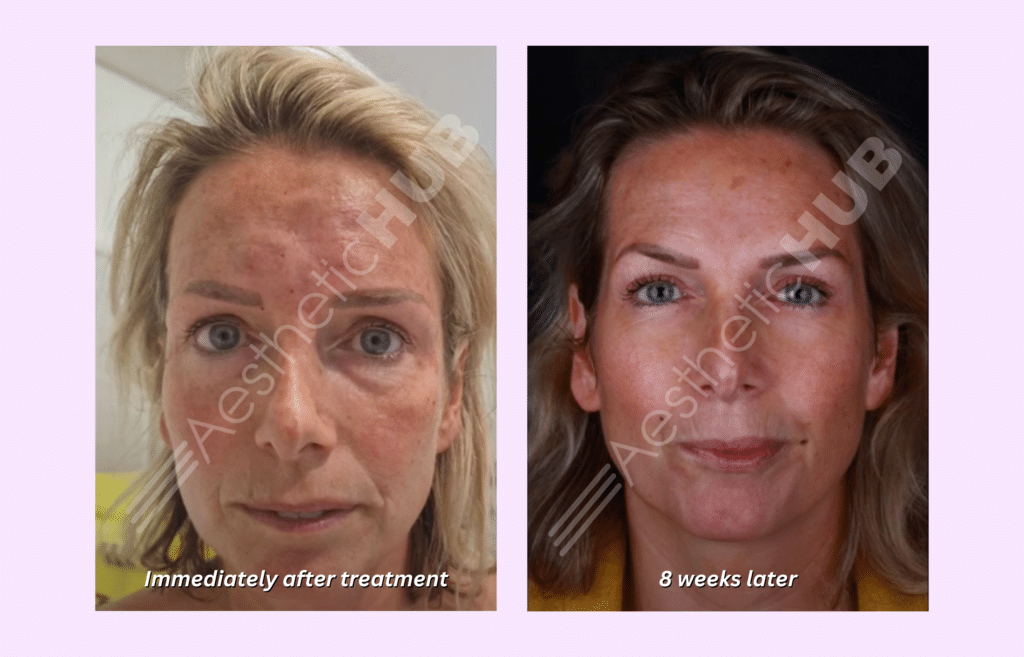
The next photo is of her 8 weeks later when she visits Dr MJ’s complications clinic for the first time. There is lumpy swelling at the glabella that extends all the way up into the hairline. She continues to experience headaches and tenderness to the touch. At this point, she’s had the complication for two months and was frustrated and frightened.
This is how many patients present with complications. They’re at the end of they’re tether and are desperate for help. As aesthetic practitioners, it is our job to prevent these types of complications from happening.
The first step in managing a complication is to identify the source of the problem. Practitioners used to rely only on visual facial assessments and patient symptoms to gauge the presence of a filler complication. These methods give an insufficient view of what’s really going on underneath.
This is where ultrasound comes in.
Why Ultrasound?
In cases like this one, ultrasound offers a real-time imaging solution that allows you to see beneath the skin, from the hyperechoic skin to the hyperechoic periosteum. Ultrasound provides a clear picture of the soft tissues, revealing the exact location and extent of the filler.
One of the major benefits of ultrasound is its ability to differentiate between different types of tissue. This use is critical when it comes to identifying misplaced filler. You’ll be able to see whether the filler has migrated or if it has been injected too superficially or deeply.
When scanning this patient, Dr MJ immediately sees a round, anechoic deposit, which is likely filler. The extent of the filler becomes visible when the ultrasound moves cranially in the central forehead. There is a lot of filler, and it is clear the original injector overfilled this patient.
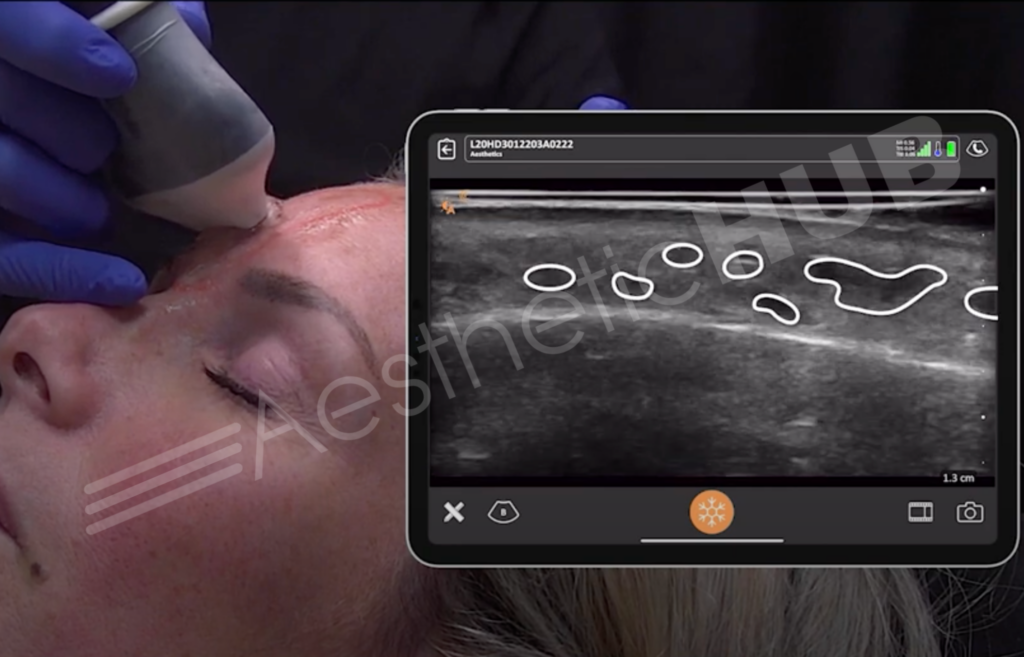
It gets even more interesting when we switch to doppler and take a look at the vascular anatomy. Ultrasound is able to show us a large filler deposit close to a branch of the supratrochlear artery. This is the area she described as painful.
Filler this close to the vessel doesn’t just cause pain. It can result in the activation of choke anastomoses resulting in ischaemia of the forehead.
Correcting Forehead Fillers with Ultrasound Guided Dissolving
Ultrasound can also be used to guide in the precise dissolving of the filler.
Since the forehead is only 4mm thick, it is key you get the probe in a good position so you can visualise the needle. On the ultrasound screen, you will be able to see the needle come into the skin and towards the filler deposit.
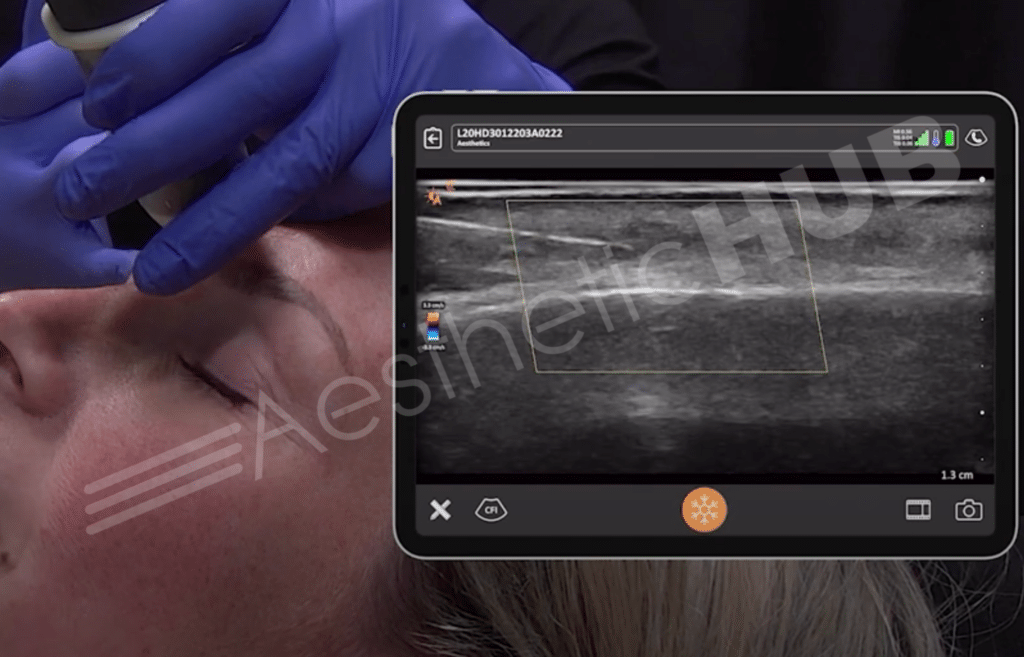
Only a small amount of hyaluronidase is required, no more than 0.1ml.
This specific case is trickier as there are multiple sites of filler that could be causing this patient’s pain. The pulsating vessel is likely the supraorbital, so placing the hyaluronidase here can cause vessel injury. This could cause bruising, and it’s important to make the patient aware of this.
Towards the brow, there is a very large vessel that’s extremely close to the filler. Whether supraorbital or supratrochlear, both have direct connections to the ophthalmic artery. Any closer and this filler could have caused this patient irreversible damage.
Here are Dr MJ’s four best tips for ultrasound guided injections:
- Angle your colour box when you scan as this helps pick up vascular flow.
- Make sure you have plenty of gel. This acts as a cushion to prevent tissue compression, especially in delicate areas where too much pressure will affect accuracy. The more gel you have, the less likely you are to compress.
- Use ultrasound gel beneath a sterile probe cover, on which you then apply sterile ultrasound gel. This helps make sure your procedure is clean every time.
- Stabilise yourself! Don’t be afraid to use parts of your patient’s head as a rest. It will improve your precision immeasurably.
Here is a scan one hour after hyaluronidase treatment. The black filler deposits are gone, and the filler has pretty much broken up completely.
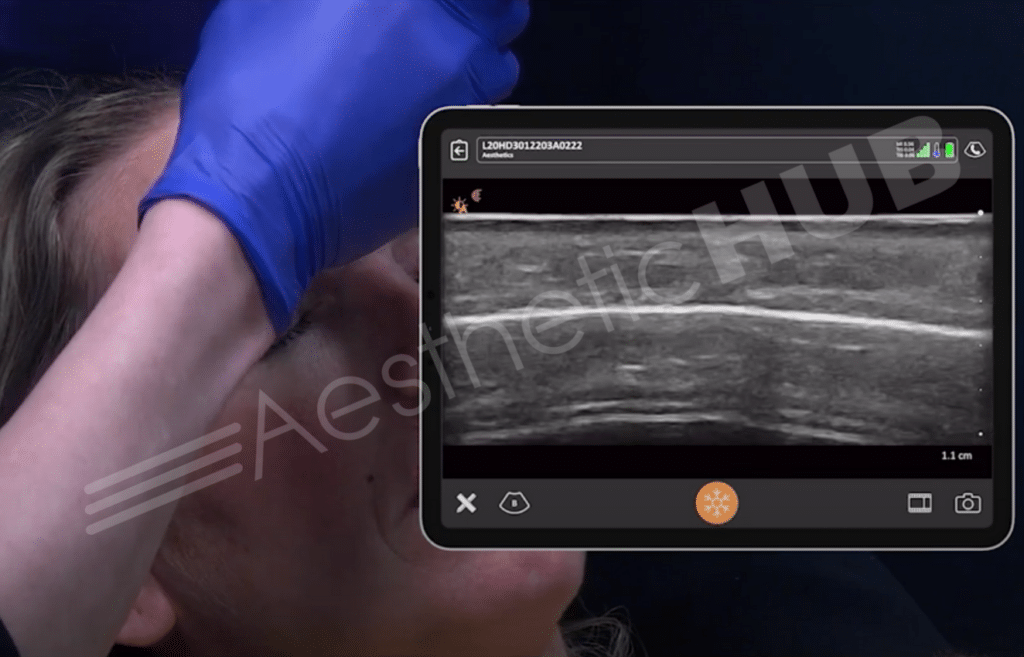
Is forehead filler dangerous?
Now this all begs the question: should practitioners even inject forehead filler if the treatment poses so many life-altering risks?
When done by the right hands, forehead filler is not dangerous. Forehead filler gone wrong happens when untrained practitioners inject. When there is a lack of comprehensive understanding of facial anatomy, complications like the one above are inevitable.
Forehead filler can produce incredible results that can change your patient’s life. It can turn a massive insecurity into a part of their face they no longer think of.
Don’t let fear of complications keep you from adding forehead filler into your practice. Dr MJ offers game-changing one-to-one mentoring sessions for advanced treatments like forehead filler to make sure you have the confidence and skills needed to inject in this area.

Learn From The Best In The Industry!
If you’re ready to start learning how to identify, inject, and dissolve with ultrasound, look no further than the Smileworks Aesthetic Training HUB – an esteemed aesthetic training centre based in the UK.
We pride ourselves on our wide range of online and hands-on courses tailored for every skill level. Whether you’re taking your first steps into the world of Botox and fillers, or you’re an advanced injector aiming to master facial ultrasound techniques, we have the expertise and courses to suit your needs.
All of our courses start online so you can start mastering ultrasound as soon as TODAY. We’re committed to providing you with all the right training and guidance you need to succeed. Take control of your professional journey and step into a future filled with endless potential and opportunities..
Join us at the HUB. Let’s shape the future of aesthetic medicine together and ensure safe, effective, and transformative results for every patient.
Want to try out our courses before committing? Take advantage of our free trial for a taste of what learning at the HUB is like.
Related blog posts:
